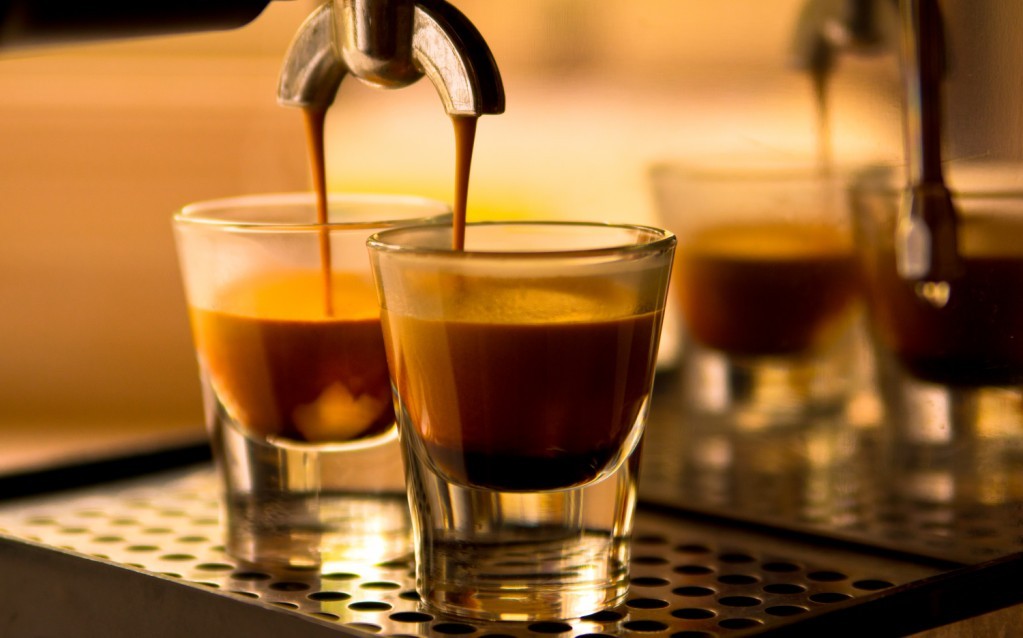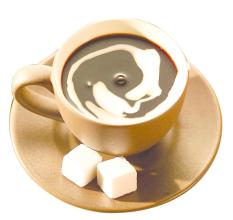Powder filler and espresso extract how to make espresso with coffee beans
Diameter of filler base:
The diameter of the filler base is very important, but the mainstream problem in the market is not the diameter of the filler, but its effective filling area. Most filler manufacturers, when making fillers, almost always wrap the edge of the base in an arc. However, this small design reduces the effective filling area. The following figure illustrates this phenomenon (the inner diameter of the VST filter cup is 58.7mm):
Schematic diagram of the effect of flanging on the effective filling area
Effective packing area and percentage of 58mm Packer
58.35mm filler, e. G. VST filler
58.5mm, Pergtamp with uncollected edges
As can be seen from the above picture, the effective filling area difference between Pergtamp without flanging and general 58mm filler is 26.87cm2, which is equivalent to 8.3% of the area of filter cup / pressed powder. If you compare the unfilled areas in reverse, the Pergtamp with 58mm is 2.43cm2, 58.35mm is 2.12cm2, and 58.5mm is only 0.18cm2, as shown in the following figure.

Extraction rate:
The real purpose of judging the cooking equipment by the extraction rate is not to get a higher extraction rate, but to extract more evenly. The more uniform the extraction, the higher the extraction rate.
Under the premise of fixed cooking parameters (including bean mill calibration), whether using Robur or EK43, the extraction rate with Pergtamp is 1% higher than that with 58.35mm filler. In other words, Pergtamp can bring more uniform extraction, whether it is to challenge the limit extraction rate, or to achieve the same extraction rate with a thicker scale, it is not difficult.
Another experiment on the difference in the shape of the bottom of the filler. Five parts of espresso were extracted with five types of fillers, and the extraction rate was measured. The average data are as follows:
American Curve 58mm: 16.9%
C-curve 58mm: 16.8% (minimum 16%)
Flat 58mm: 17.5%
Flat 58.35mm: 17.8% (maximum 18.2%)
Pergtamp: 18.9% (between 18.7% and 19.1%)
The hole at the bottom of the VST filter cup is relatively wide, so the water flow through the powder layer is more uniform, and the water at the edge of the filter cup is more than that of the other brand filter cup. If the central force is greater than the edge, the pressed powder at the edge will be softer than the center, and the water will flow through the edge easily, resulting in uneven extraction and lower extraction rate, resulting in Pergtamp > Flat > Curve.
Other:
The slightly tapered base will not jam the filter cup as easily as other 58.35mm fillers, and it is more convenient to make nutating.
Instructions for the use of the powder filler:
Do not collide with hard objects, otherwise it is easy to deform the edge of the base. It is not only easy to jam the filter cup, but also reduce the effective filling area.
After filling and pressing, please take out the filler carefully and slowly. If it is too intense, it will easily damage the surface of pressed powder and even affect the structure of pressed powder. By the same token, when using the handle, you should be careful not to hit the coffee machine or brew the head, so as not to damage the pressed powder structure.
Pergtamp applies only to VST filter cups.
Be sure to mix the powder evenly and smoothly. Tapping the handle of the filter is far more uniform than other powder blending techniques (such as stockfleching) or powder blending tools.
Important Notice :
前街咖啡 FrontStreet Coffee has moved to new addredd:
FrontStreet Coffee Address: 315,Donghua East Road,GuangZhou
Tel:020 38364473
- Prev

Espresso and controlled crema concentrated blend Robusta Italian blend coffee beans
One rebuttal to not using Robusta in condensed combinations is that Robusta can bring better crema to concentrate. This is true, because Robusta contains less oil than Arabica. On average, Robusta contains only half as much flavor and aromatic oil as Arabica, which means less oil can be extracted.
- Next

Italian coffee bean mix coffee mix formula proportion Italian coffee bean brand
The blending of drip filter coffee: mocha-Java coffee, people can't help thinking that blended coffee is as old as home-made coffee. Thick-tasting, average-quality Java coffee combined with moderate, floral, more acidic mocha coffee, which was the only two kinds of coffee at the time. Is it just a habit to mix these two kinds of coffee together? Or is it because of this?
Related
- Guji coffee producing area of Guji, Ethiopia: Humbela, Shakiso, Wulaga
- What is the most expensive variety of Qiloso in BOP multi-variety group?
- How to store the coffee beans bought home?
- Why are Yemeni coffee beans so rare now?
- Ethiopian Sidamo all Red Fruit Sun Sun Santa Vini Coffee beans
- SOE is mostly sour? What does it mean? Is it a single bean? what's the difference between it and Italian blending?
- Is Italian coffee beans suitable for making hand-brewed coffee?
- How to choose coffee beans when making cold coffee? What kind of coffee beans are suitable for making cold coffee?
- Just entered the pit to make coffee, what kind of coffee beans should be chosen?
- Can only Japan buy real Blue Mountain Coffee? What are authentic Jamaican Blue Mountain coffee beans?

